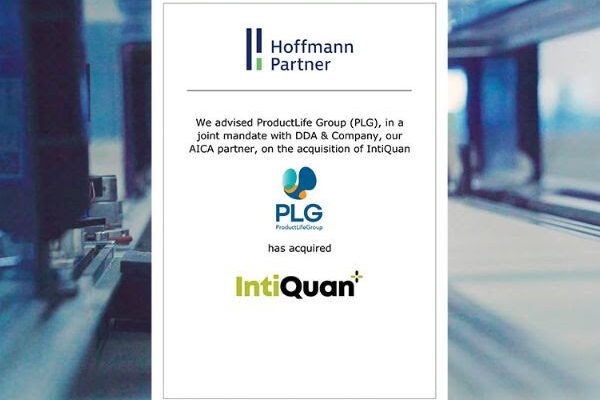Getting Ahead of Recent Change

By Russ Warren, Managing Director
Change has been around for a long time – the ancient Greek philosopher Heraclitus is credited with first observing “change is the only constant in life.” Some years positive changes outweigh negative ones, but in 2022, a middle market business owner must seemingly cope with a powerful array of negative changes in order to remain successful. Unlike some well-capitalized publicly-traded companies, middle market businesses don’t always possess the organizational or financial wherewithal to prevent margin erosion from negative changes.
Several examples of negative change that we have consistently heard especially since the Covid pandemic began include the following:
- Rising material, labor and transportation costs (general inflation)
- Supply chain disruptions
- Labor shortages
Let’s discuss two important questions business owners find themselves asking in order to navigate some of these negative changes:
- Have I used all the tools available to address issues caused by recent change?
- What can I do to improve my company’s ability to ‘see around corners’ and spot inflection points earlier than others to prepare for what’s coming and preserve/increase profitability?
Strategies to Address Today’s Negative Change
Several of the negative changes above are often initiated by market dynamics outside of the control of the middle market business owner. That doesn’t mean there are not some practical internal actions and tools an owner can use to combat the impact of these changes on profitability.
Rising Material, Labor and Transportation Costs (Cost of Goods Sold Inflation)
Years ago, I worked with a client that created a position – VP of Manufacturing Methods – whose sole responsibility was to take out the cost of inflation (an agreed percentage) in their major products each year without jeopardizing quality. This activity included changes in design, tearing down competitors’ products and surveying customers to learn how they actually used the company’s products. The result was improved competitiveness and the ability to 1) hold prices and gain market share or 2) raise prices when others did and reflect the increase in their bottom line. The key – understanding your Cost of Goods Sold structure and working towards a reduction where possible without sacrificing quality.
Admittedly this action initially results in an increase of labor costs to hire this person but the goal may also be accomplished by identifying a consultant to assist in the process. Asking other professionals or trusted advisors for process consultant recommendations can help improve the business under current conditions and position the company to combat future changes. Consultants also exist to assist with assessing and improving the individual components of a company’s Cost of Goods Sold (Labor, Materials, Inventory, Other Expenses).
Supply Chain Disruptions
Supply chain disruptions are outside the control of most owners yet has affected almost every business in some capacity. Not many middle market businesses saw the plethora of international situations coming together in different parts of the world that precipitated the disruptions, but that doesn’t mean there are not strategies to combat the negative impact on profitability.
Pricing is an obvious way to regain margin, but it requires “pricing power” – that is, customers must continue to buy at the new higher price. If specifically, a manufacturing company has all the parts/components/materials available to continue producing, they are in a wonderful position to exert pricing power over customers that are willing to pay more for a “must have” product that is unavailable elsewhere in the market. Unfortunately, not all businesses have the inventory or components necessary to fulfill orders especially in the manufacturing sector. Many businesses we have spoken with recently that have access to cash/financing, but limited access to inventory, have pivoted to creatively identify domestic-based sources and purchased inventory in larger quantities to ride out the current supply chain disruption. This is not always easy to do but worth the effort to fulfill customer demand and maintain cash-flow and profitability. These additional costs can also be a pass-thru to customers that need the businesses products. When domestic sources are unavailable, the savvy owner might consider relying on or establishing longer-term relationships with domestic suppliers to make strategic purchases and ensure consistent supply channels.
Other revenue enhancers to mitigate supply chain impacts include adding complimentary services or products (such as assemblies, maintenance services, and parts sales) and exploring alternative sales channels, including enhanced online presence to create more value for the customer.
Labor Shortages
Without doubt the single most challenging change we hear from middle market business owners is the dearth of willing and qualified employees of every skill level. This generally cuts across all business sectors. Businesses see opportunities to grow by adding additional shifts or personnel but are unable to find employees in the current market. This trend started before the pandemic and has been exacerbated by it. The thought of McDonald’s having to pay a $1,000 bonus to entice lower-skilled workers to even fill out an application to work there, or companies paying attendance bonuses for employees who regularly show up for work, would have been unimaginable even a generation ago, but here we are.
The root causes of this change are a myriad of changing demographics, work ethic, social change, and globalization among others. The solutions are beyond discussing in this article but suffice to say that an intact and stable workforce for any middle market business is a precious commodity to nurture and maintain. Identifying, acknowledging, and rewarding those key employees that are critical to the business is crucial to maintain a stable and dedicated workforce. Rewarding those same “happy” employees to recruit and recommend others of similar mindset is another way to find additional qualified people.
Improving A Company’s Ability to ‘See Around Corners’
Given the multitude of day-to-day tasks that a middle market business owner must address, it’s no surprise that lifting their head up to see changes on the horizon is difficult. Nonetheless, opening our minds to possible futures can be helpful in making better decisions, says Rita McGrath, Professor at Columbia Business School, and author of the 2019 book, Seeing Around Corners. She adds, discovery-driven planning helps discover the future while containing risk. Or, as Yogi Berra famously said, “You can observe a lot just by watching.”
The book Seeing Around Corners discusses methodologies a company can use to identify and act strategically on an inflection point. With today’s pace of change, finding a way to integrate getting ahead of change into a company’s planning process is worth the investment of the owner’s attention.
Megatrends
No one knows what the future holds, but it pays to consider recognized megatrends and how they are likely to affect your business in the future. While there is no official list, Project Management Institute, a large U. S. non-profit, lists these six for 2022:
- Digital Disruption – data breaches, privacy concerns, effort to keep up, shaping AI ‘ethics’
- Climate Concerns – pressure on greenhouse gas emitters: electricity (32%), transportation (17%) manufacturing (13%), agriculture (12%) and process industries (6%)
- Demographic Shifts – talent gap, retirement age changes, ‘great resignation,’ work-life balance
- Economic Shifts – pandemic/political-induced rebuilding of U. S. supply chains
- Labor Shortages – replacing talent, retaining corporate memory; motivating young workers
- Civil, Civic, Equality Movements – untapped talents of women, minorities; fair compensation
Identifying Business Inflection Points and Change Early
What will innovation and society bring us next? Life-altering change, as challenge and/or opportunity, arrives in the form of inflection points. Some are unforeseen and as the recent past has taught us many of them can be disruptive to your business. Keeping one eye on the ground and one on the horizon is not easy for a middle market business owner but unfortunately necessary to remain viable in our ever-changing world. A business owner will do themselves well to realize that this awareness of change and the existence of resources to guide them through the maelstrom. The David Bowie song “Changes” has never rung more true than today. Good luck!
© Copyright EdgePoint 2022. Russ Warren, Managing Director, EdgePoint can be reached at 216-342-5859 or at rwarren@edgepoint.com
< Blog



